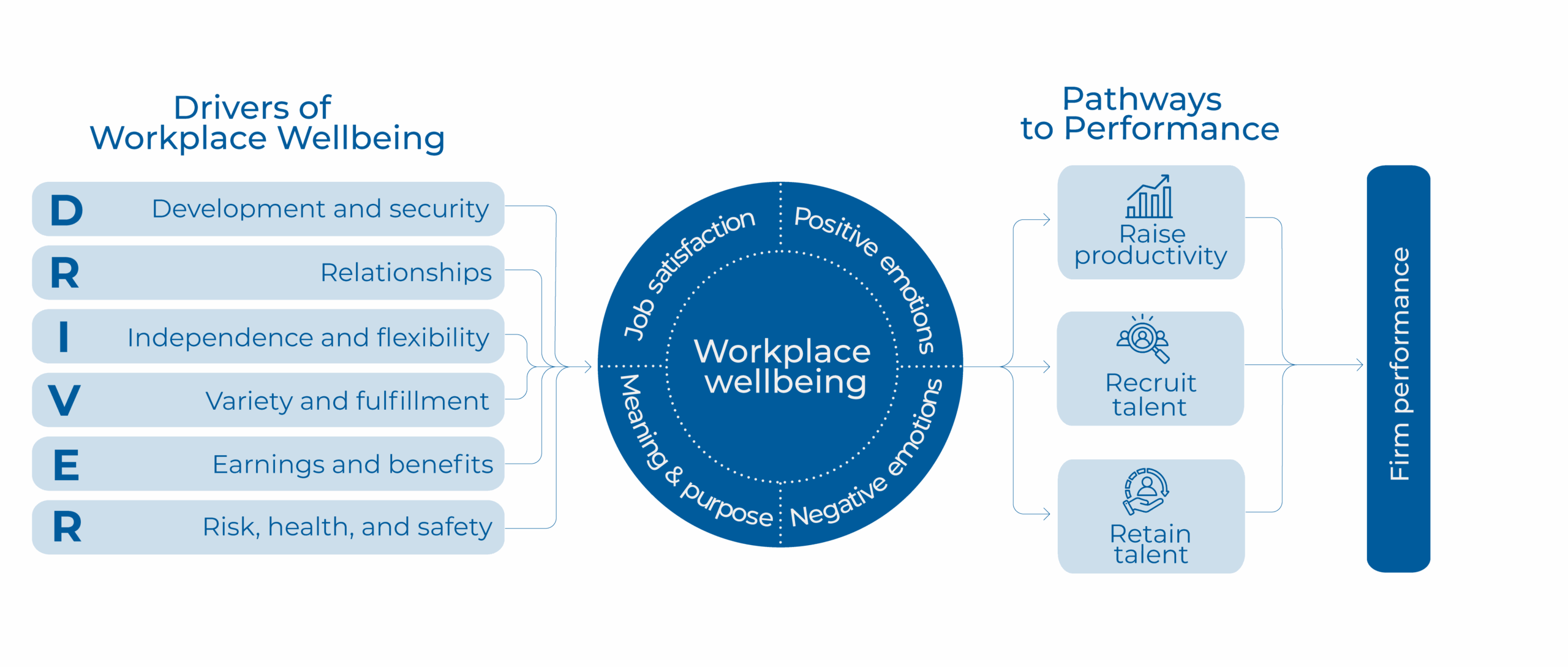Workplace Wellbeing
The Work Wellbeing Playbook
Organisations with the highest wellbeing scores perform better.
The Work Wellbeing Playbook, published by the World Wellbeing Movement with the support of the Wellbeing Research Centre at the University of Oxford and Indeed, is a living review of the evidence behind the best and latest interventions for improving workplace wellbeing.
We’ve condensed all of the key insights into an accessible, high-level summary to support busy professionals – and now, in Work Wellbeing Playbook 2.0, we’ve simplified the multiple drivers of wellbeing into six new categories.
Make the most of this resource
Before you explore the interventions here, read our guidance on how to maximise our summarised insights in your workplace, and hear from the experts who created this resource.
View a condensed version of the Playbook in French | Dutch | German
Drivers of workplace wellbeing
Only once you have started to measure how your employees are feeling – and exploring why they feel the way they do – can you implement science-based strategies to improve wellbeing.
By assessing the importance of the various drivers of wellbeing in your organisation, you can identify the key areas to target in order to enable your employees to thrive at work.
We’ve simplified the multiple drivers of workplace wellbeing into six broad categories, but it’s important to remember that organisations are made up of individuals – we all have different needs and preferences.
After you have read our guidance, and heard from the experts behind the Playbook, use the links below to explore different interventions for the key drivers of workplace wellbeing.
Make sure to check our socials regularly for news of new interventions, added monthly, or subscribe to our newsletter to be the first to know when our latest recommendations are released.
The Work Wellbeing Playbook © 2024 by the World Wellbeing Movement is licensed under CC BY-NC-ND 4.0.

